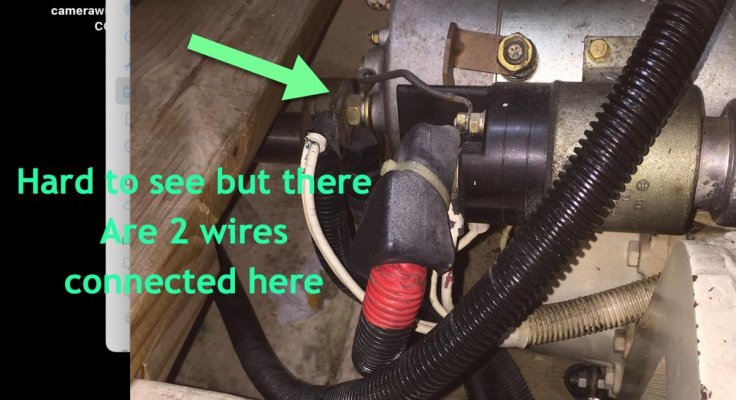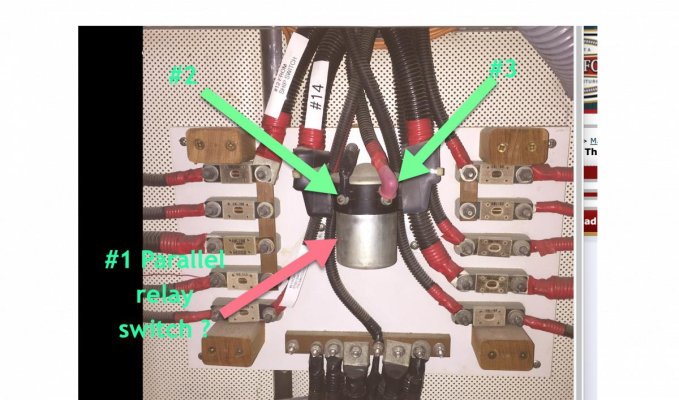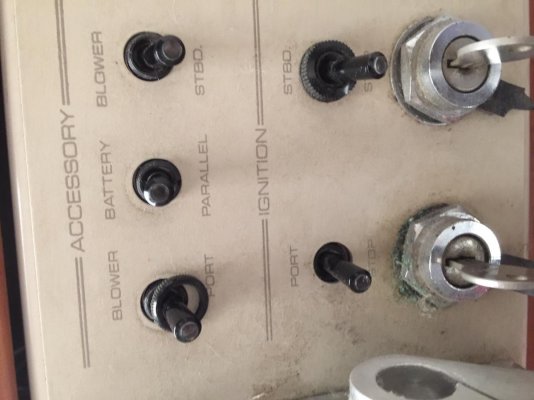The Brockerts
Senior Member
- Joined
- Oct 17, 2014
- Messages
- 246
- Location
- USA
- Vessel Name
- Moonstruck
- Vessel Make
- 1990 Californian/Carver 48 MY
Looking for some guidance debugging(testing) a parallel Battery switch.
I've got twin 3208 Cats, 2 8D starting batteries per engine. I've got a Parallel Battery switch(see picture) at the helm. As I'm testing and fixing all electrical issues, I've come across this and I'm struggling with the testing/debugging.
So disconnect the Port 8D batteries, flip the parallel switch and see if the port engine starts off the STBD 8D's? Seems that might be a valid test.
Seems like there is a DPDT electrical switch in my 12c DC panel.(see picture).
If I flip the switch should I hear that relay throw?
Seems like I should be able to measure 12v DC somewhere on that switch when the parallel helm switch is thrown.
I'm also puzzled by the starter battery cables. 2 cables are connected to the starter, One for each bank?
I'm looking for some ideas on the best way to test all of this
The Brockerts
I've got twin 3208 Cats, 2 8D starting batteries per engine. I've got a Parallel Battery switch(see picture) at the helm. As I'm testing and fixing all electrical issues, I've come across this and I'm struggling with the testing/debugging.
So disconnect the Port 8D batteries, flip the parallel switch and see if the port engine starts off the STBD 8D's? Seems that might be a valid test.
Seems like there is a DPDT electrical switch in my 12c DC panel.(see picture).
If I flip the switch should I hear that relay throw?
Seems like I should be able to measure 12v DC somewhere on that switch when the parallel helm switch is thrown.
I'm also puzzled by the starter battery cables. 2 cables are connected to the starter, One for each bank?
I'm looking for some ideas on the best way to test all of this
The Brockerts





